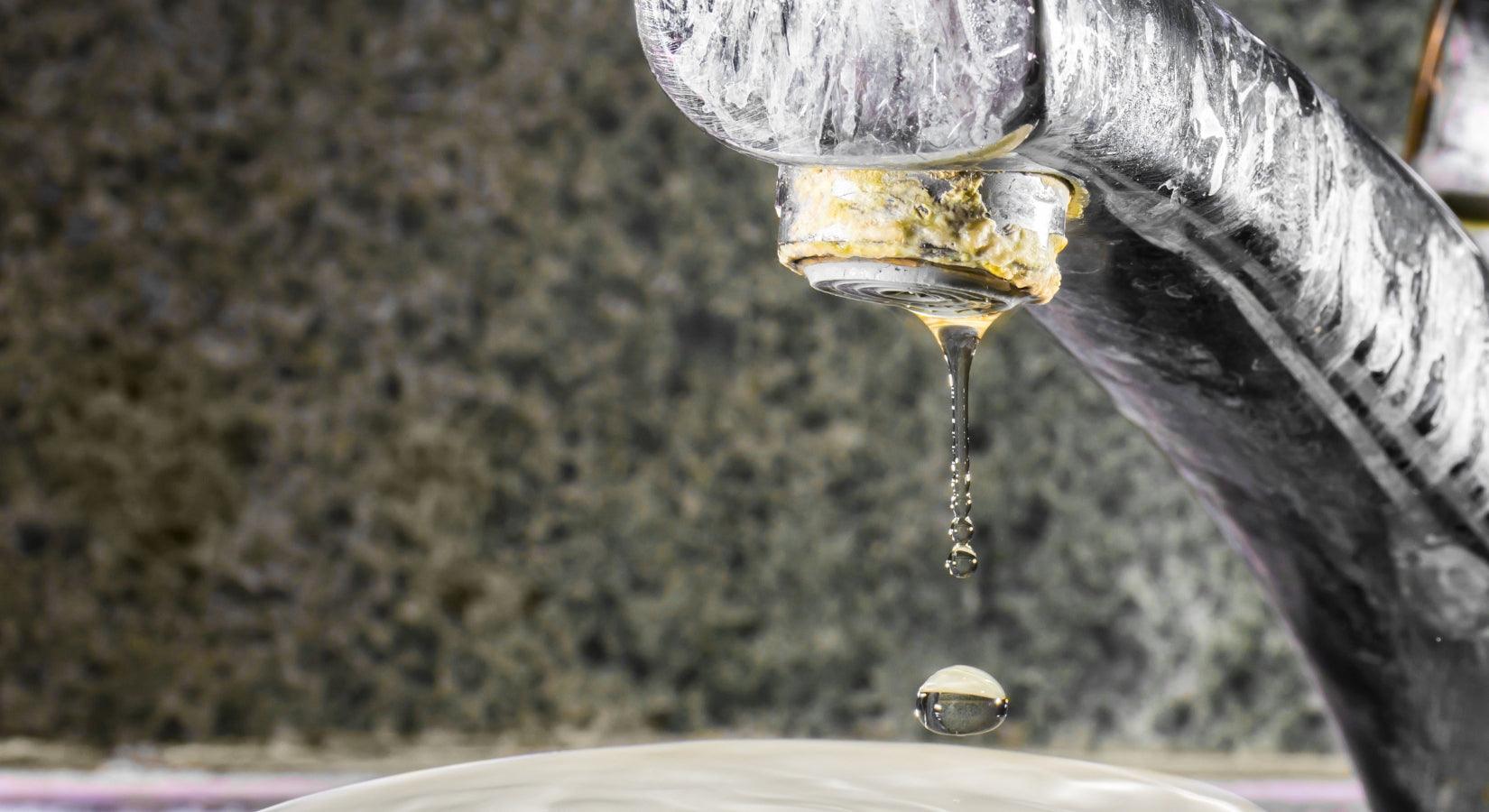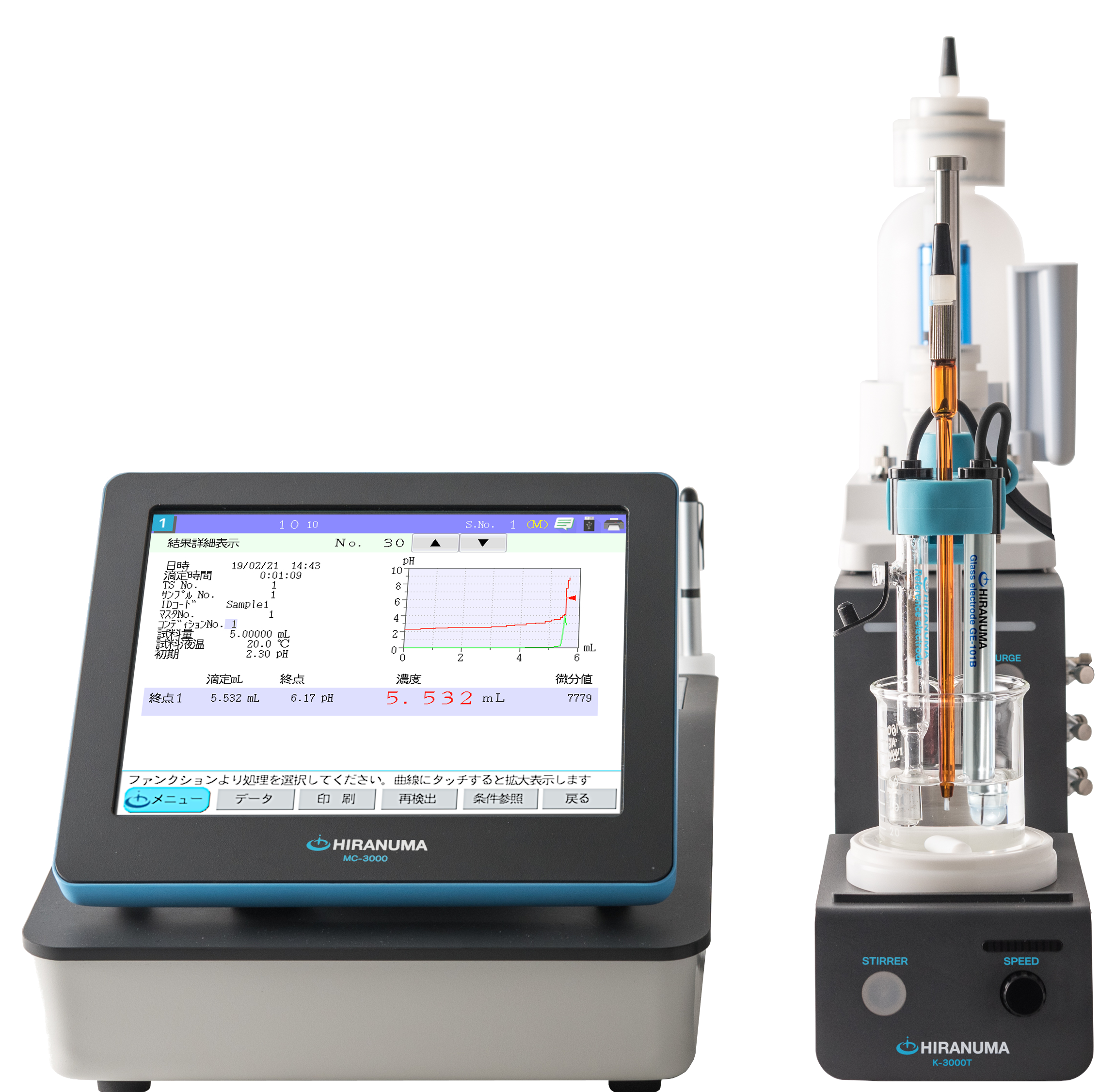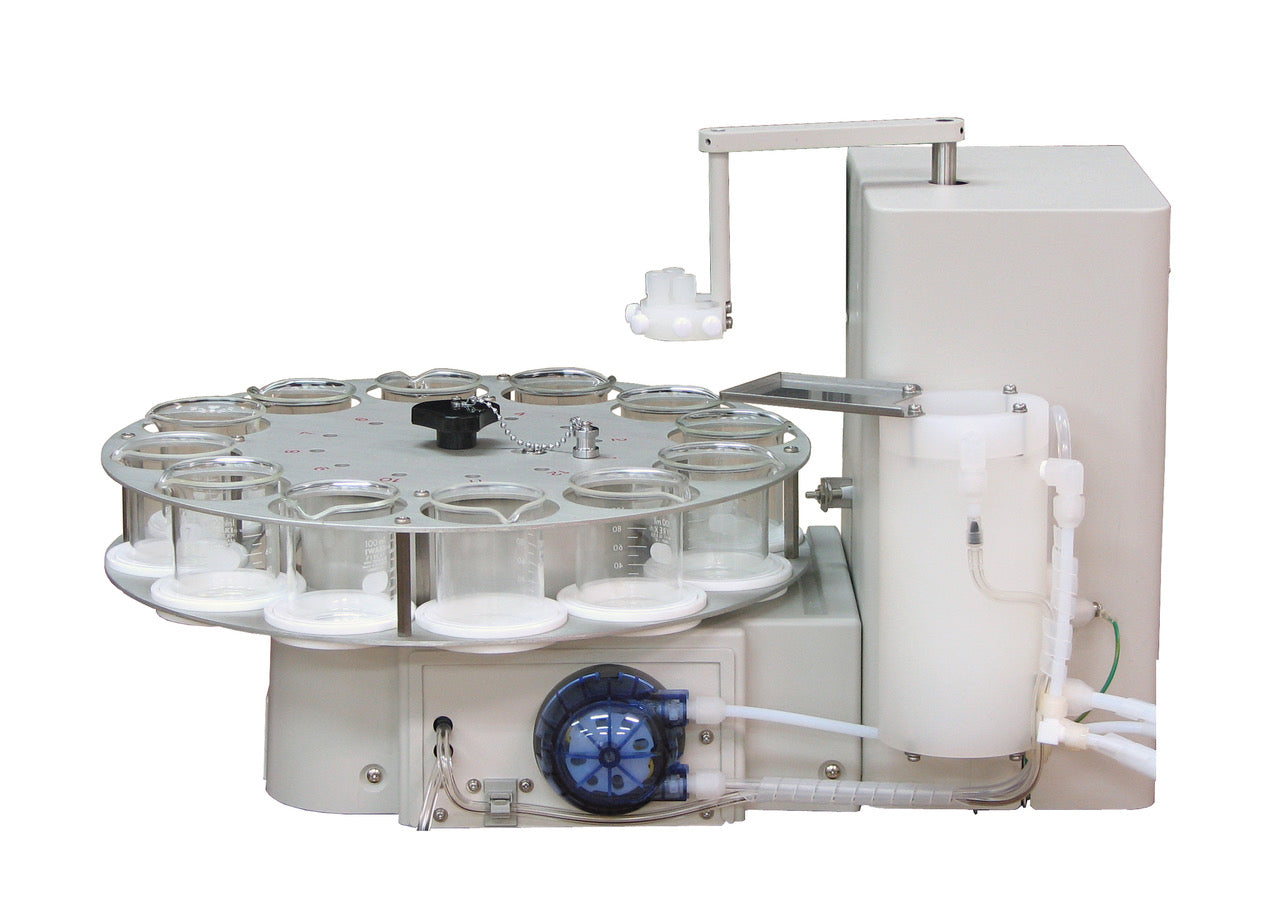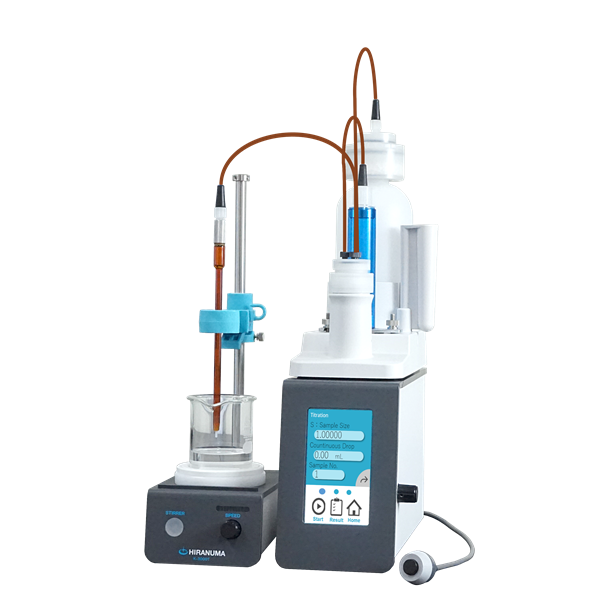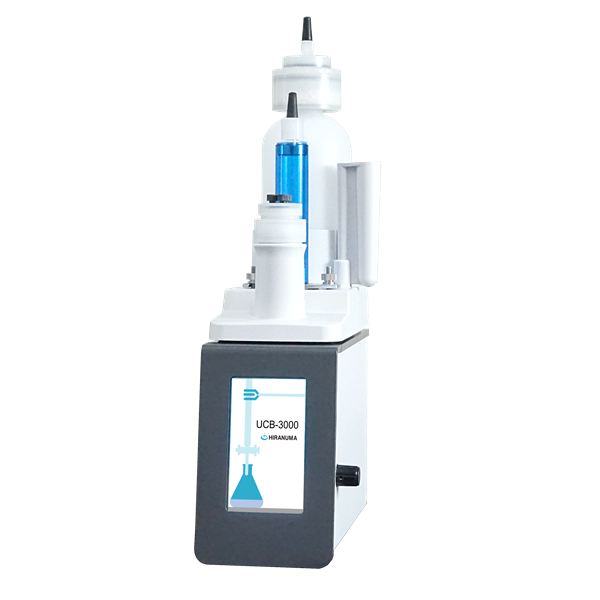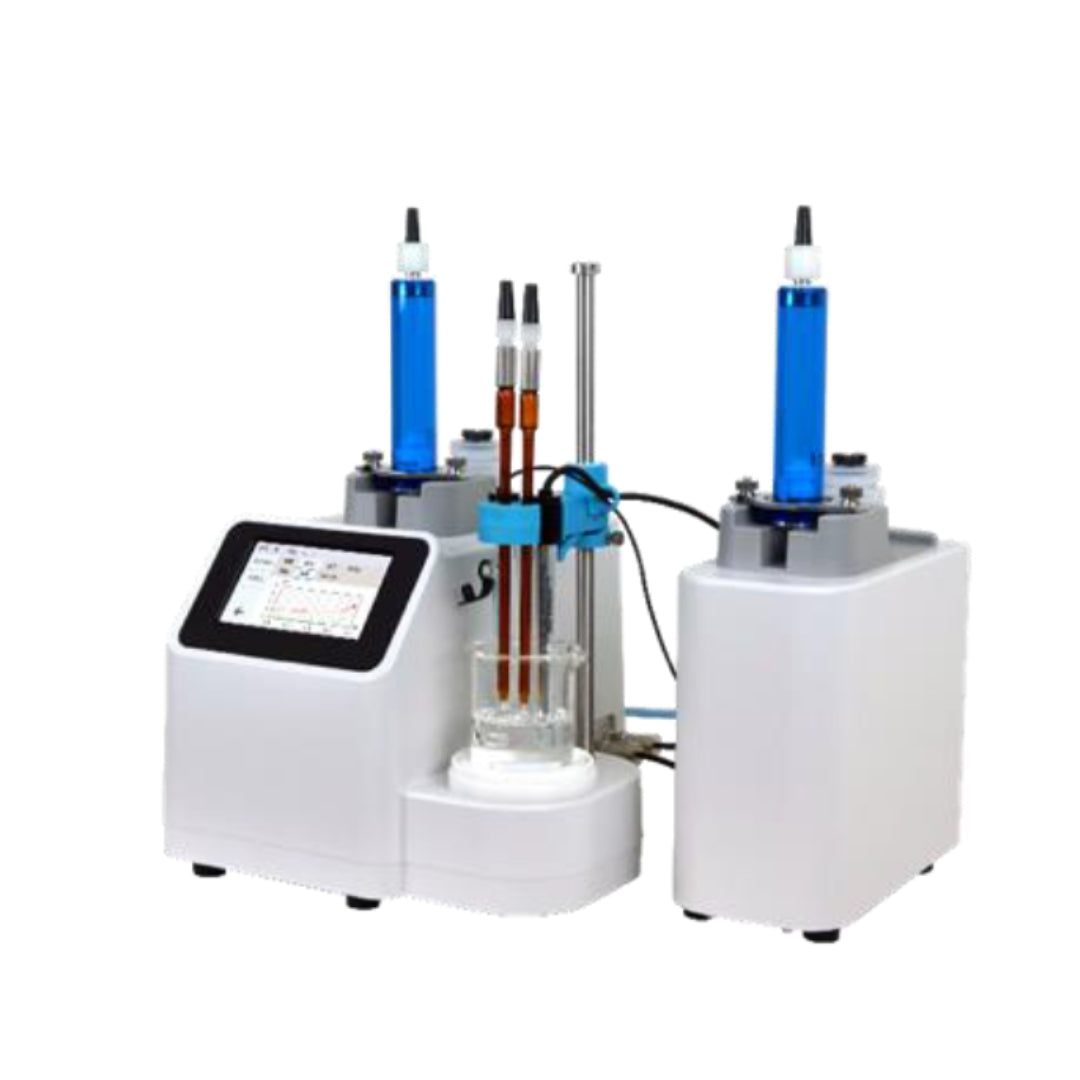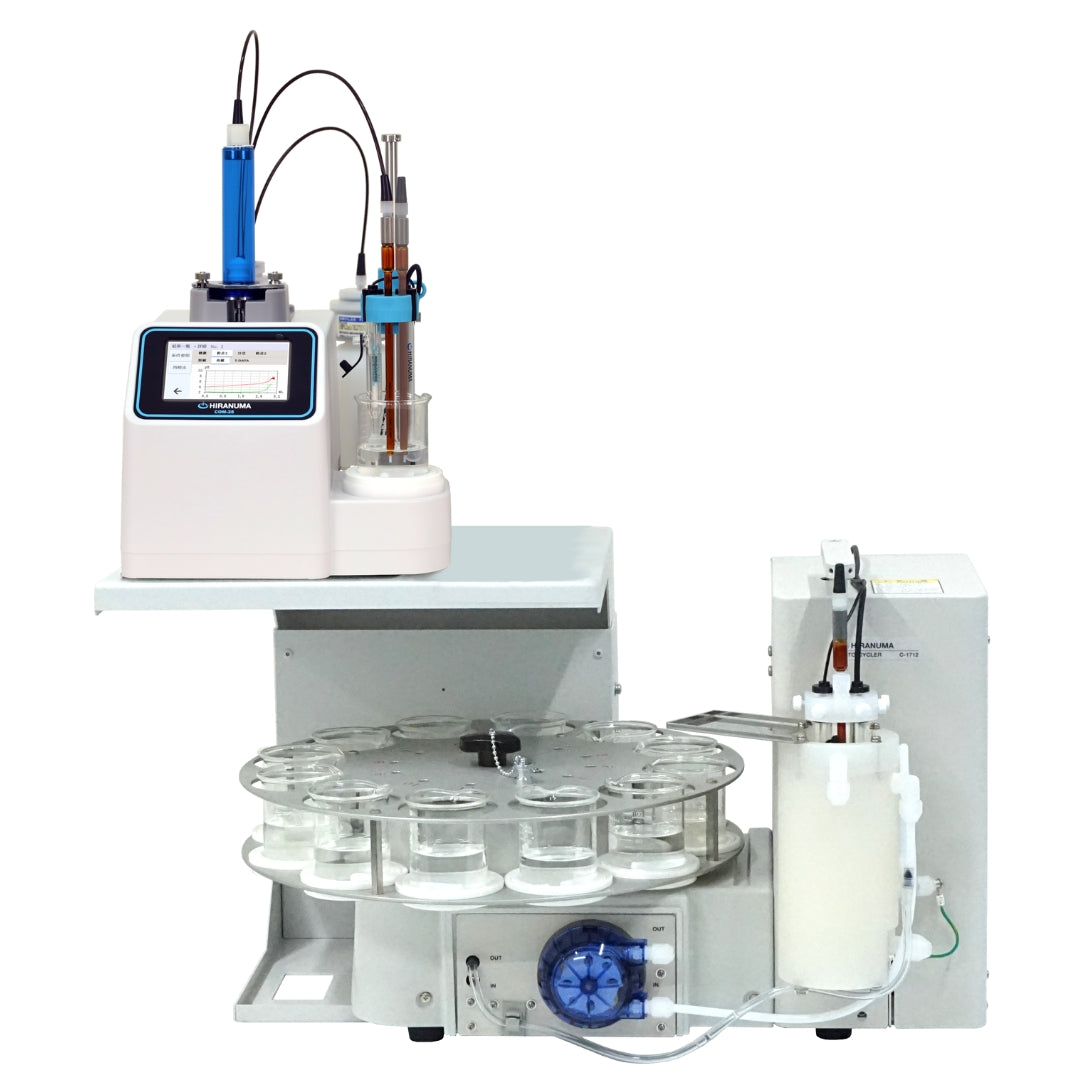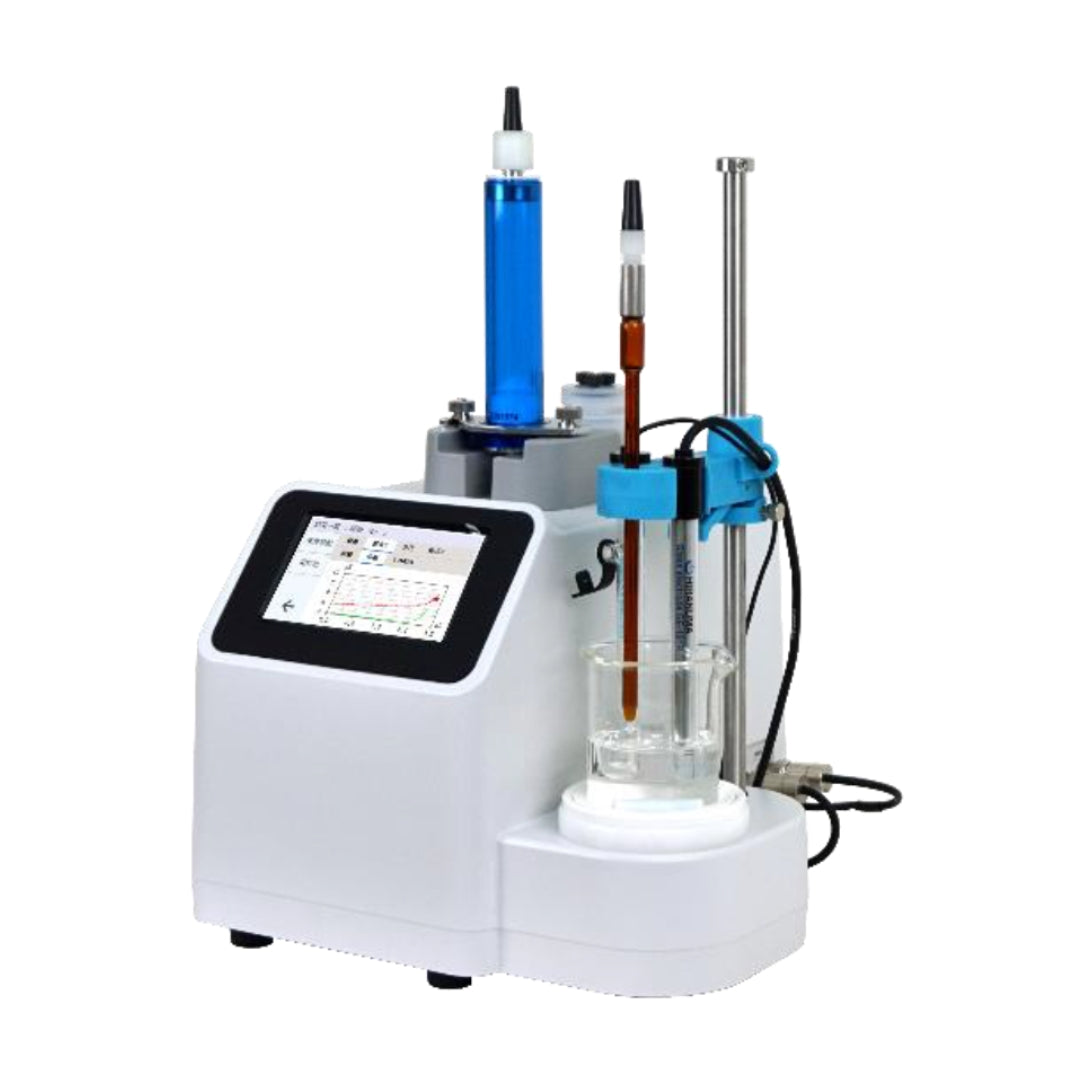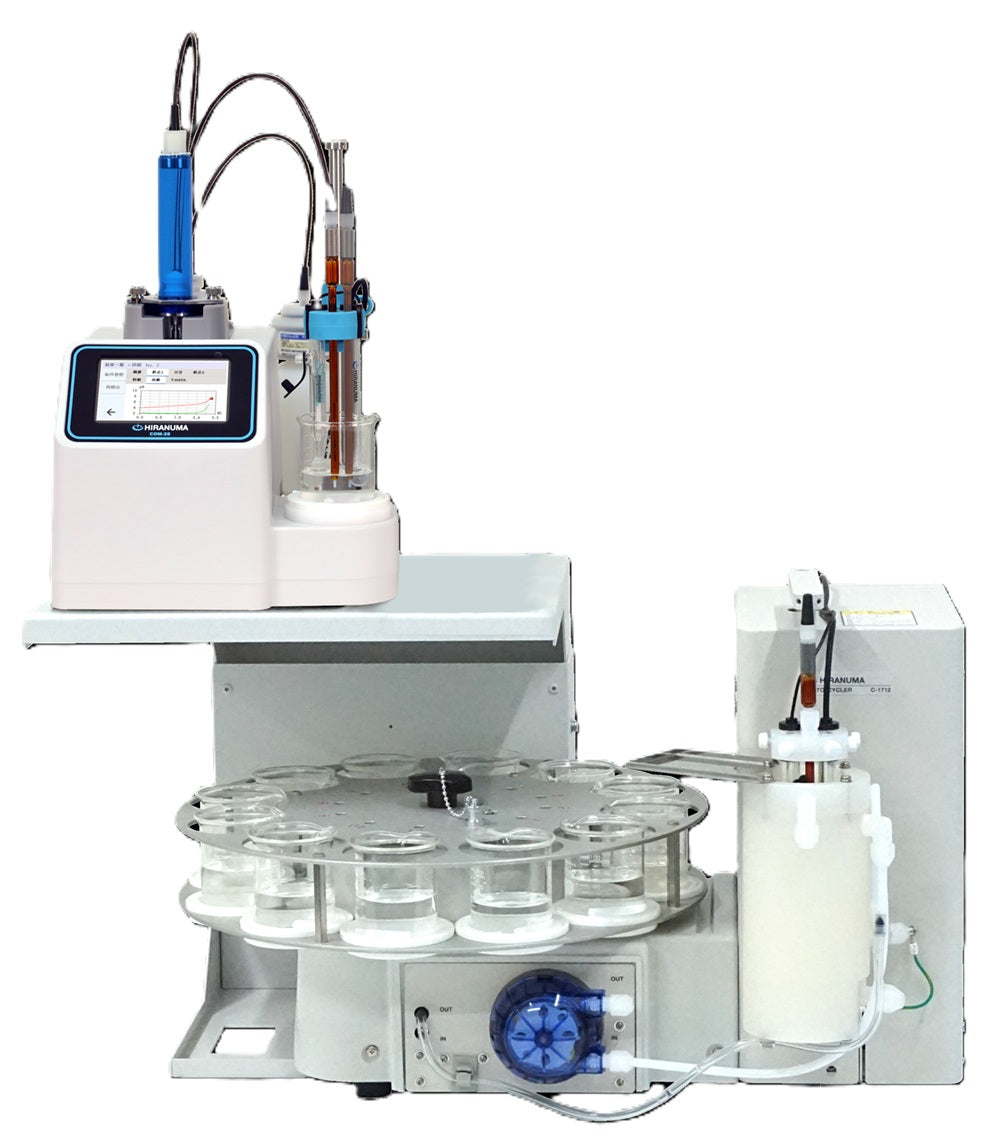| HIRANUMA APPLICATION DATA | Automatic Titrator | Data No. | D2 | Nov. 14,2018 |
| Environment | Total hardness in tap water |
1. Abstract
Hardness in water is total amount of calcium and magnesium ion in water converted to mg/L of comparable calcium carbonate. “Hardness” has the following types:
(1) Total hardness Total amount of calcium and magnesium ions
(2) Calcium hardness Calcium ion
(3) Magnesium hardness (Total hardness) – (Calcium hardness)
(4) Non-carbonate hardness (Permanent hardness)
(5) Carbonate hardness (Temporary hardness)
These are stipulated in some applicable standard such as Standard Methods for the Examination of Water, Standard Methods of Analysis for Hygienic Chemists, and JIS K0101 Testing methods for industrial water etc.
This report introduces an example for determination of total hardness in tap water with photometric titration method using EDTA standard solution according to the Standard Methods for the Examination of Water.
Take 100 mL of sample and add 1 mL of 0.01 mol/L magnesium chloride, 2 mL ammonia buffer, and 0.2 mL of EBT indicator. Titrate with 0.01 mol/L EDTA standard solution (red →blue color). Perform the same procedure for 100 mL of DI water instead of sample as blank measurement.
| CaCO₃ + Na₂EDTA → Ca-EDTA + Na₂CO₃ | |
| MgCO₃ + Na₂EDTA → Mg-EDTA + Na₂CO₃ |
2. Configuration of instruments and Reagents
| (1) | Configuration of instruments | ||
| Main unit | : | Hiranuma Automatic Titrator COM Series (M type photometric unit for photometric titration with 650 nm optical filter) |
|
| (2) | Reagents | ||
| Titrant | : | 0.01 mol/L EDTA standard solution | |
| Additive solution | : | 0.01 ml/L Magnesium chloride solution | |
| Buffer solution | : | Ammonium chloride-ammonia buffer solution (pH 10) Dissolve 6.75 g of ammonium chloride in 30 mL of DI water, add 57 mL of ammonia solution, and dilute to 100 mL with DI water. |
|
| Indicator | : | EBT Indicator Dissolve 0.5 g of eriochrome black T and 4.5 g of hydroxylammonium chloride in 100 mL of ethanol (95 % [v/v]). |
|
3. Measurement procedure
| (1) | Dispense 100 mL of sample into a 200 mL beaker with volumetric pipette. |
| (2) | Add 1 mL of 0.01 mol/L magnesium chloride solution with volumetric pipette. |
| (3) | Add 2 mL of ammonia buffer. |
| (4) | Add 0.2 mL of EBT indicator. |
| (5) | Immerse photometric probe and start titration with 0.01 mol/L EDTA standard solution. |
| (6) | Perform the same procedure for 100 mL of DI water as blank measurement |
4. Measurement conditions and results
Examples of titration conditions
Measurement of blank

Measurement of sample

Measurement results
Measurement of blank
| Number of measurement |
Size (mL) |
Titrant volume(mL) |
|---|---|---|
| 1 | – | 1.041 |
| 2 | 1.041 | |
| 3 | 1.038 | |
| Statistic calculation |
Avg. | 1.040 mL |
| SD | 0.0017 mL | |
| RSD | 0.17 % |
Example of titration curves

Sample Measurement results
| Number of measurement |
Size (mL) |
Titrant volume(mL) |
Total hardness (ppm) |
|---|---|---|---|
| 1 | 100 | 6.718 | 56.837 |
| 2 | 100 | 6.745 | 57.107 |
| 3 | 100 | 6.719 | 56.847 |
| Statistic calculation |
Avg. | 56.9 ppm | |
| SD | 0.153 ppm | ||
| RSD | 0.27 % | ||
Example of titration curves
5. Note
| (1) | Measurement The total hardness in tap water can accurately be determined by photometric titration method with EBT indicator using photometric probe. |
| (2) | End point detection “Method” on the condition parameter is set to “B cross” because the point where indicator color change is completed is detected as endpoint. When the concentration of total hardness is relatively high and much titrant volume is required, “C.P. mL” function is useful. Titrant can be added at once by setting “C.P. mL” to a few mL smaller than titrant volume at the endpoint, it can reduce measurement time. |
| Keywords: | Tap water, Total hardness, Photometric titration, EDTA standard solution |
*Some measurement would not be possible depending on optional configuration of system.

